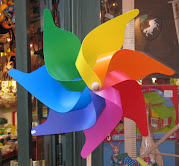 Hat tip to Simon Barrow and Ekklesia for pointing to the news that the Methodist Church art collection has gone online. I've been really enjoying looking through the paintings. Simon writes:
Hat tip to Simon Barrow and Ekklesia for pointing to the news that the Methodist Church art collection has gone online. I've been really enjoying looking through the paintings. Simon writes:
The collection is an extraordinary achievement of quiet but committed curation, and includes some very well-regarded twentieth century artists, as well as a number of less publicly profiled (but equally evocative) contributors ...Each work that is online has a commentary, written for the most part by Francis Hoyland
Like many viewing the collection for the first time, I was taken aback by its quality. If you're harbouring expectations of religious schmaltz or Christian kitsch, forget it. There is some very challenging material in the Methodist Art Collection, as well as unusual perspectives on familiar themes. There is also warmth, colour, craft and hope.
There are also some wonderful works by him which he also writes commentaries for:
I do not think that I am mature enough, or sufficiently detached to give a commentary on my own paintings but I can tell you a few things about them.
Every scene was more or less wrung out of me by experience. It was as if the subject matter imposed itself on me. My wife, my father, my mother, my sister, my friends and children all come into these little paintings, as did my spiritual life and my horror of war ...
In fact, for rather more than thirty years I have been attempting to make a 'Life of Christ' in ninety-one scenes. I am now within four paintings of the end of my fourth try. All prayers and good wishes gratefully received!
The image I've chosen here is The five thousand by Eularia Clarke (1914-1970) painted in 1962. Hoyland's commentary begins:Eularia Clarke was inspired to produce this picture while eating fish and chips at Canvey Island. She wrote of the fear she felt about painting Our Lord and how she only felt able to include a priest - and only half a priest at that - in the top right hand corner of the painting, as a kind of surrogate for him. Besides this the priest is engaged in the most secular part of the Mass for he is reading the parish notices after he has finished his sermon.
Read more here. I'm going to enjoy going back to this wonderful resource again and again.






2 Comments:
Wonderful choice--fascinating painting and commentary. Thanks for the link.
Thansk Angela
glad you like the picture - it was painted two years before my birth but is very evocative of my culture - I was just really taken with it.
Post a Comment